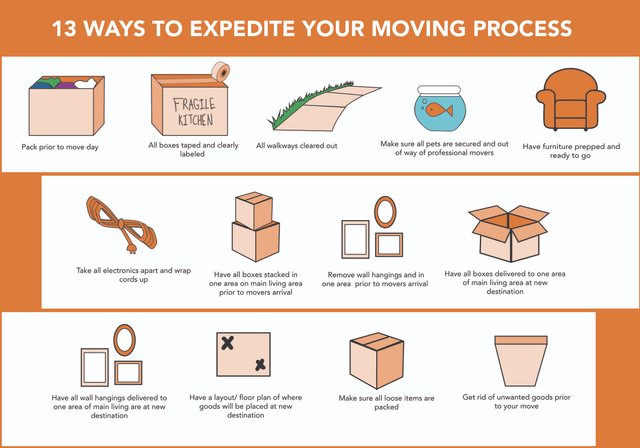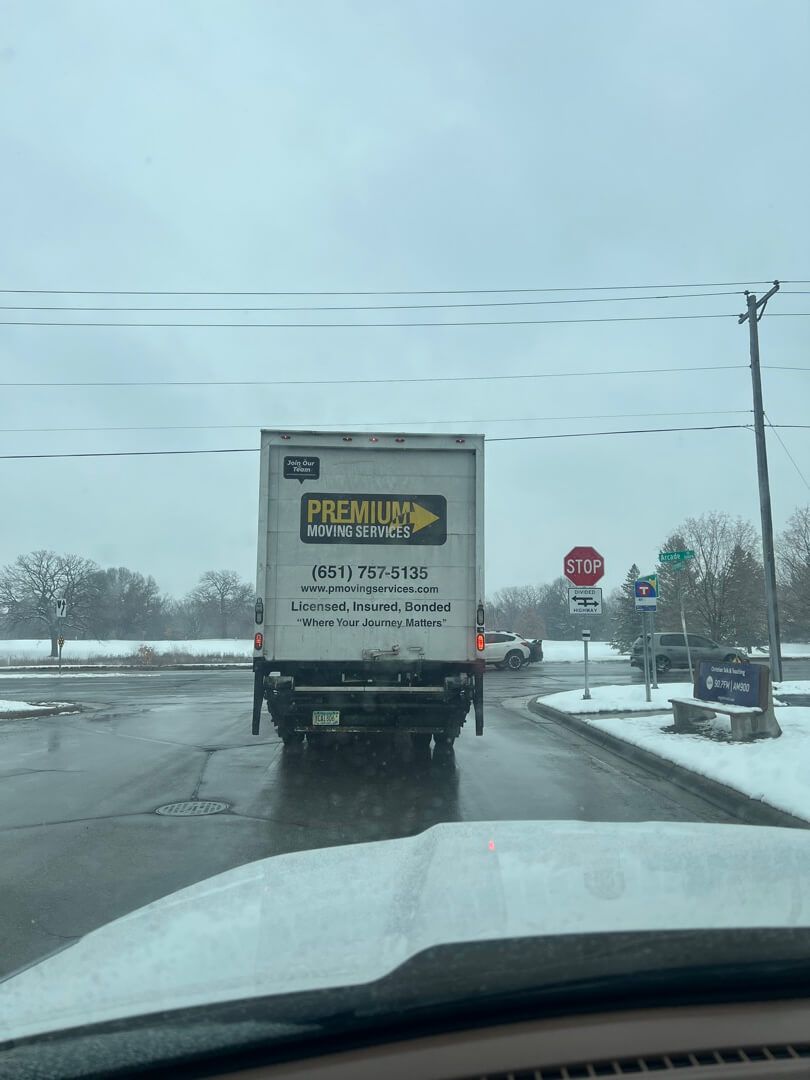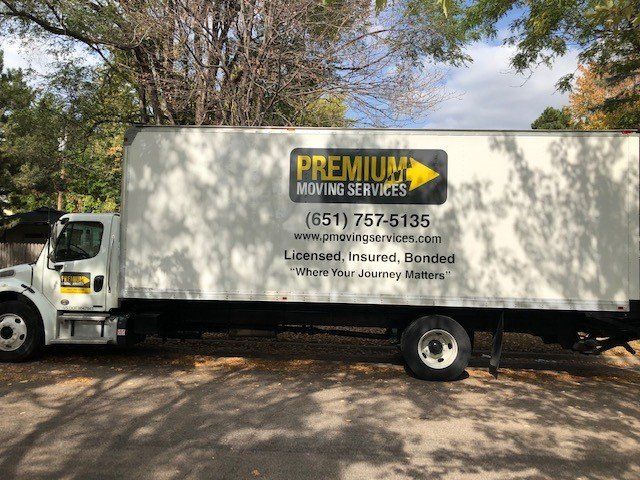Long Distance Moving
Long Distance Movers near me
Premium Moving Services sets ourselves apart with our dedication to ensuring quality service coupled with safety and efficiency at the fore-front for your long distance needs.
We offer flexibility for each project and can meet your needs whatever they may be.
Through our relationship from start to finish you can expect the following from us:
- Courteous, friendly, and professional service
- Experienced and trained movers that can adapt to any situation
- Packing and unpacking services
- Convenience to work around your schedule
- Safety, efficiency, and respect for those in your current and new community
In any project we strive to exceed any expectations you may have of us through our adaptability and flexibility.
- MOVE OPTIONS
Premium Moving Services is built around the idea that you’re not just another customer. We understand that everyone has different needs and expectations. That’s why we’re dedicated to providing more than what you might consider a “basic move.” Our teams will work with you to give you the customizable service that you should expect. We are dedicated to meet to customer satisfaction and providing quality moving services. Every move is a priority from start to finish.
We offer various options so that can we cover every different type of move. Here is a list of the services you can choose from when you hire us.
Full pack – packers come to the home or business and expertly wrap and pack all items; boxes are labeled to ensure they arrive to the correct location
Partial pack – packers wrap and pack one item, one room or the entire home, whatever you request
Unpack – packers unpack and put away items as directed or labeled by boxes
Load only – movers load belongings into a rented truck, trailer, car, etc. This option is often used by customers who are moving long distances but prefer to drive themselves. Premium Moving Services movers from your current area will pack you up and when you reach your destination
Unload only – movers unpack your cars, vehicles or rented trucks and place items as directed
Local Move – most common service; “local” is defined differently by each state and is usually based on the distance of the move
Intrastate Move – long distance within a state; definition of long distance varies by state
Interstate Move – out-of-state move
Commercial Move – could include a large corporate office, school, or even a home office
Home Move – moving a residence
Move one item (custom) – movers can move one item of choice to be transported elsewhere
Internal Move – movers move large pieces from room to room as requested
We pride ourselves on being the commercial and house movers in Minnesota that will give you what you want. Contact us today so we can begin the process. We’re here to help.
- MOVING CHECKBOXDescribe the item or answer the question so that site visitors who are interested get more information. You can emphasize this text with bullets, italics or bold, and add links.
- MOVING BOXES
Use this calculator to figure out how many boxes you will need for your move:
Standard Moving Boxes
1.5 cubic foot moving box – the smallest box sold at Premium Moving Service, it’s often referred to as the book or record box. Best used for small heavy objects like books, records, cans, jars of food, utensils, flatware, shoes, etc.
3 cubic foot moving box – referred to as the lamp or lampshade box; frequently used interchangeably with the 1.5 cubic foot box
4.5 cubic foot moving box – use for lighter objects such as pillows, bedding, and stuffed animals
6 cubic foot box – use for light objects (if you pack heavy items in this box it will be difficult to move)
Picture or mirror moving box– a four-piece box that can come in large or small sizes. Can be customized by telescoping in and out; use crumpled packing paper in the corners to add cushion and make sure to wrap mirror or picture with bubble wrap before placing in the box.
Wardrobe moving boxes – allows clothes to be transported on hangers; includes a metal bar along the top of the box to hang clothing
Boxes for moving dishes – also called a barrel, dish barrel or dish box; it’s the strongest box available. Pack fragile, breakable items such as China; usually used for kitchen items.
Dish pack inserts – cardboard that goes inside the dish pack boxes to form individual cells for fragile items. Inserts are adjustable; extra cardboard piece included to be used as a springboard to cushion.
Packing Supplies and Tips for Moving
Packing paper/plain newsprint – used to wrap everyday items to prevent scratching; when crunched up it can be used as cushioning.
Tissue paper – softer than newsprint, used for wrapping very delicate items. Also provides cushioning and fills in small spaces when packing fragile figurines and China.
Bubble wrap – plastic packing material made up of hundreds of tiny “air cushions” or bubbles used to over-wrap small, delicate items after they are wrapped in tissue. Also helpful when wrapping larger fragile items such as lamps and pictures.
Pink anti-static bubble wrap – used to wrap electronics including stereos and computers. It is similar to traditional bubble wrap but does not cause static electricity. If traditional bubble wrap is used to pack these items, a static electric charge could be created damaging the item.
Duck® tape/Sealing tape – plastic tape, 1.5 inches (3.81 cm) to 2 inches (5.08 cm) wide; best for packing. Test to see if it ruins finish before taping up drawers and canisters.
Permanent marker – used to label boxes with contents and destination in a new location; mark boxes “fragile” and “this side up” when appropriate.
Resealable plastic bags – used for nuts and bolts as you disassemble items, tape bag to a disassembled item.
Tips on collecting packing supplies:
Beware of used boxes – people sometimes try to pack belongings in used boxes to save money. Beware – produce boxes often become weakened from the moisture of transportation or product spoilage. Additionally, insects often nest in used boxes.
Use clear Duck® packing tape only – seal boxes with packing tape. Duct tape doesn’t adhere well to corrugated cardboard. Boxes put together with duct tape will fall apart.
- PACKING SERVICES
When you hire Premium Moving Services, you’re getting a full range of services. Because we want your moving experience to be as smooth as possible, we’re dedicated to helping you through every step of the process. That’s why we’ve provided you with the packing tips on this page. Getting things properly organized from the start will help make the big day that much easier.
Packing tips
Packing for yourself can be a great way to economize your move. To help you pack as safely and efficiently as possible, consider some of these suggestions.
Do not over-pack moving boxes — the heavier the item, the smaller the moving box.
Start packing the items you don’t need as soon as you know you’re moving.
Avoid mixing items from different rooms in the same moving boxes.
Put detailed labels on tops and sides of all moving boxes.
Don’t interlock moving box tops. They must always be sealed with packing tape.
Pack a moving box of things that you will need immediately at your new home and make sure it is loaded last on the truck so that the contents will be immediately available at your new home.
To minimize the chance of breakage, pack and unpack over a padded surface so that if you do drop an item, it will land on a cushioned surface.
Lampshades and fine china should not be packed in newspaper because the ink can permanently stain these items. Instead, use packing paper on these goods.
When you hire Premium Moving Services, you’re not just getting typical house movers in Minnesota. You’re getting full, personalized service. Contact us today.
- HOME MOVING TIPS
Other moving companies in Minnesota may not be concerned with how easy the process is for you, but at Premium Moving Services we want moving to be as stress-free as possible. Here is a thorough list of tips to help you.
Moving Tips
Make your reservations for movers two to four weeks before your move day.
Avoid mixing items from different rooms in the same box.
Use wardrobe boxes to make closets easier to pack. Clothes in drawers can be placed in suitcases.
Use only small boxes for books. They get very heavy, very fast.
For large appliances be sure to check your owner’s manuals to see if there are special instructions for moving.
Never use printed newsprint to wrap fine china.
Always stack dishes upwards when packing.
Pack important and sentimental documents separately to be easily accessible including: children’s health records, passports, family records, insurance information and photo albums.
Remember: the heavier the item, the smaller the box.
Don’t pack with food or supermarket boxes. You never know what little critter is hiding – or if the box will be strong enough to support your possessions.
Don’t use used boxes. You don’t know if the box will be strong enough to support your possessions.
Remember: the heavier the item, the smaller the box.
Always stack dishes upward when packing.
Never use printed newsprint to wrap fine china.
Never use duct tape – use packing tape.
Clearly label all boxes on top and side.
Pack important and sentimental documents separately to be easily accessible including: children’s health records, passports, family records, insurance information and photo albums.
Don’t try to get rid of your children’s favorite things before the move – even if it makes it easier. Kids sometimes have a hard time dealing with the change of the move itself.
For large appliances be sure to check your owner’s manuals to see if there are special instructions for moving.
As you take apart furniture and other items make sure to tape all parts to the main base.
Use only small boxes for books. Books get very heavy, very fast.
Use wardrobe boxes to make closets easier to pack. Clothes in drawers can be placed in suitcases.
Try to pack all electronic equipment, like stereos, in their original boxes. Otherwise, use bubble wrap when packing these items.
Start packing items you will not need ahead of time.
By law, a moving company can’t transport hazardous materials such as gasoline, bottled gases and other flammables, ammunition and explosives.
Avoid mixing items from different rooms in the same box.
Pack a box of essential items that you will need immediately after the move and make sure it’s the last thing added to the truck.
Always pack and unpack breakables over a padded surface.
Always tape boxes. Don’t interlock the tops.
Make your reservations for movers two to four weeks before your day.
Clean out closets, the attic, and the basement as soon as you decide it’s time to move.
Two weeks before the move don’t forget to arrange to transfer school records.
Make a “survival closet” of things for the last cleanup before you move out – broom, dust cloth, dust pan, mop.
Remember to get snacks for move day.
Schedule disconnect times for about a week before your move day — you don’t want to have to pay for cable, phone and utilities when you aren’t even there!
Cancel newspapers, cable, pest control, cleaning help, lawn services about a week before the move.
Mail in your change of address forms about week before your move date.
Clean your stove before you move out.
The day before your move, defrost the fridge.
Make sure to get enough cash to get you through move day.
Take time to say goodbye to friends and neighbors before your busy move day.
If you are depending on friends and family to help you move, have a back-up plan if they don’t show.
Don’t use boxes without tops. No tops make it impossible to stack properly in the truck.
Use custom-designed boxes when packing fine china and clothing.
When interviewing moving companies, make sure to ask if they are insured and bonded and how they charge.
When interviewing moving company, make sure to ask if they charge extra for large items such as pianos and big screen TVs.
When interviewing a possible moving company, remember to ask what kind of training their movers and drivers go through before servicing customers.
When interviewing possible moving companies, remember to ask if there is a cancellation policy.
When interviewing possible moving companies, remember to ask if they will have a contact person on site or provide a contact number for the day of the move.
When interviewing possible moving companies, remember to ask if they move nights and weekends and if they charge for that service.
When interviewing possible moving companies, remember to ask what type of payment options they offer.
When interviewing possible moving companies, remember to ask what their customer referral rate is.
When interviewing possible moving companies, remember to ask if they use full-time employees or temps and day labor. (Be cautious of those who use temps and day labor because they may not have proper insurance.)
When interviewing possible moving companies, remember to ask if they offer free estimates.
When interviewing possible moving companies, remember to ask if they charge for travel time from their office to your location.
When interviewing possible moving companies, remember to ask if they have suggestions on how to make your move easier.
When interviewing possible moving companies, remember to ask if they offer packing and unpacking services.
When interviewing possible moving companies, remember to ask if your items will be insured during the move.
When interviewing possible moving companies, remember to ask if they have a minimum charge.
When interviewing possible moving companies, remember to ask if they charge by the piece or by the hour.
- HOME MOVING TERMS
Looking for Minnesota movers who will be straight with you and not confuse you with all sorts of jargon? At Premium Moving Services, we believe in making things convenient for you. Our list of moving terms will help keep the process simple.
Moving Terms
Additional services — packing; appliance servicing; unpacking; or moves that involve extra stairs that are needed either per your request or building regulations that may otherwise result in additional charges
Agent — a local moving company authorized to act on behalf of a larger, national company
Appliance dolly — a special dolly with straps to help load and unload large items like appliances and oversized furniture
Anti-static bubble wrap — bubble wrap that helps prevent static charge usually pink in color and often used on electronics such as computer monitors
Assessed value coverage — specifies how much money per $1,000 of assessed value you will need to pay to cover your household items to their fully assessed value (Purchasing this protection requires a cash value be assigned to the items you will be moving. Some valuation policies are calculated on a sliding scale, where the price per $1,000 of coverage will vary depending upon the total amount of coverage. In such cases, carriers are requested to quote valuation prices based on $25,000 of coverage. Most valuation policies require the entire load be covered — not just specific items. Ask your carrier for terms.)
Bill of Lading — the contract between the mover and the customer that also acts as a receipt (It’s important to understand everything on the bill of lading before you sign it.)
Binding/non-binding estimate —
Binding – a flat price based upon a given inventory meaning no matter how long the job takes, the flat price is always paid (It’s given only when an onsite estimate is performed.)
Non-Binding – estimates based upon the movers’ previous experience (These estimates are subject to change.)
Hourly Rates – charging by the hour, per person, per truck
C.O.D. (Cash on Delivery) — payment is required at the time of delivery — ask if your payment should be in cash, credit or check
Flight of stairs fee — any additional cost for a flight of stairs either at the point of origin or the destination (A third-floor walkup counts as two flights since you are starting on the first floor. Serviceable elevators large enough to transport the household goods eliminate the need to pay this fee.)
Full-replacement value coverage — the amount of money to purchase a new replacement for a damaged item regardless of the age of the item (Most valuation policies require the entire load be covered — not just specific items. Ask your carrier for terms.)
Full-service mover — most common type of moving company (Movers will move all household goods from your old address to your new address. Your items are picked up from every room in your old home and delivered to the appropriate rooms in your new home. Individual pieces of furniture are wrapped. Full service movers will also provide, at additional cost, full packing and unpacking services.)
Inventory — the detailed descriptive list of your household goods showing the quantity and condition of each item
Interstate move — any move that crosses a state boundary — regardless of the number of miles
Intrastate move — a move within a state boundary
Packing service — many full-service movers provide customers the option of having all of their possessions packed before the move and later unpacked at the destination
Stair-carry charge — an extra charge for carrying items up or down flights of stairs
Standard coverage — movers are required by law to provide a minimum amount of free coverage (This number, typically 60 cents, refers to the amount of money you will receive per pound of damaged goods. This coverage is a bare minimum and should not be relied upon to cover you for any significant damage. For example, if you have a priceless vase that weighs two pounds, you would only be entitled to $1.20 of compensation if the vase is damaged in transit.)
Tariff — the carrier rates provisions for every aspect of moving a shipment from one location to another
Valuation — the degree of “worth” in a shipment; the valuation charge compensates the mover for assuming a greater degree of liability than is provided for in its base transportation charges. (All movers are required to assume liability for the value of goods they transport. Most movers offer two levels of liability — basic and full value. Basic value is also referred to as released value.)
- SELECT THE RIGHT MOVING COMPANY
There are plenty of moving companies in Minnesota to choose from. Here’s how you can pick the right one.
Selecting a Moving Company
Choosing the right company for your office move is an important decision.
Make sure you fully understand the services each moving company offers and the rate at which the services can be provided. It’s also wise to check with Minnesota’s state moving and storage association to learn local regulations that apply to movers in your area. Also, ensure that you know your rights and responsibilities when you move.
Questions to ask a commercial moving company
Below is a list of questions the experts at Premium Moving Services suggest asking moving companies to make sure they fit your business needs.
Is your moving company licensed?
Does your company charge by the piece or by the hour?
Do you have a minimum charge? How do you charge after the minimum is met – in 15-minute increments or every half hour?
Do you have any extra charges for larger items or extra flights of stairs?
Do you charge for the travel time from your office to my business?
Do you charge extra for moves in the evenings or on the weekends?
What payment options do you offer? (Many moving companies require a deposit.)
Do you have full-time employees or do you use temps and day labor? (Be cautious of companies that use temps or day labor because they may not be properly insured.)
Do you carry worker’s compensation for your employees?
What kind of training have your movers and drivers completed?
Are items insured during the move? (Even if a mover is bonded and insured, it doesn’t mean that your items are covered during the move. Some states require a company to put a valuation of 60¢ per pound of coverage.)
What kind of cancellation policy do you offer? (You should always be able to cancel or postpone until a few days before your move.)
Do you offer free moving quotes? (We recommend getting an estimate for all business moves.)
Do you offer suggestions on how to make the move easier? (Movers who care about customer service and making your move a positive experience will do all they can to help you.)
Do you have a contact number for the day of the move should any challenges arise?
- BENEFIT FOR YOU
Our goal is to exceed your expectations. We’re the Minnesota movers that want to make your home move go as efficiently and smoothly as possible.
Premium Moving Service’s team is able to handle any type of home move — whether it’s an entire home or piano moving. We offer a flexible schedule to meet your needs. We are available on evenings and weekends. All of our movers are fully trained, licensed and insured. You will find them to be polite, professional, and in uniform. We are determined to live up to our reputation of being caring and helpful.
Premium Moving Services is more than just a moving company. We also offer packing and unpacking services in addition to offering moving boxes and packing supplies for sale.
Premium Moving Services uses effective move planning to minimize move times and offer less interruption to your business. We also offer:
Extensively trained movers who are courteous and work in uniform
Clean and well-equipped trucks
Free on-site moving quotes for moving and packing services
Move orientation with packing and labeling training for employees (if you choose to have them do it themselves)
Packing and unpacking services – we do as much or as little as you need
Competitively priced moving boxes and packing supplies
Experience handling computers and other office equipment
Safety is a priority. We make sure property management is aware we will be in the building. We find out if there are specifications or rules we need to follow. And we pad walls, door frames and elevators.
To building managers:
No one wants your facility to get damaged as tenants move in and out, or any inconvenience to other tenants. Premium Moving Services is very comfortable working with commercial management companies and we are more than willing to follow your rules and guidelines for moves. If you have any questions or concerns, we have a move manager on site for you to contact. We also offer moves after hours and on weekends for your convenience.
Contact us by calling our office at 651-757-5135 or by visiting our contact page.
READ OUR REVIEWS!
-

As you might imagine I was in a tizzy during the day of moving. I'm a senior and moving to another state. I called Premium and they gave me a very reasonable quote. I booked them for 2 men to load all my 60+ boxes and furniture. They showed up early and with smiles on their faces. They dug in immediately and worked so hard I was amazed. They were extremely careful with the furniture so as not to scratch anything either on the walls or the furniture itself. They were done in less time then originally estimated. I could not have been happier. Thank you guys! You were great!
Gerry Spence
Read All Reviews -

Chester was very good to work with on our move. He was good about communicating his time of arrival, worked efficiently and got the job done in a timely manner. He and his assistant Daniel were particularly careful in packing and moving our (newer) big screen TV, as well as our entire apartment. Both Chester and Daniel were very pleasant. In addition, the fee they charged to get the job done was very affordable when compared to other company’s we called. I would highly recommend Premium Moving Service.
Paris Revoir
Read All Reviews -

Chester and his crew did an excellent job very professional and very respectful I would recommend him to anyone I know who needs his services.
Kathy Hardman
Read All Reviews 
They were very efficient.
Edward Rausch
Read All Reviews
They were professional, came on time and were efficient. Would hire them next time also.
Tripura Shankar
Read All Reviews







